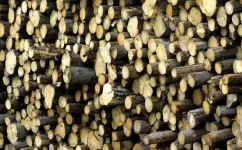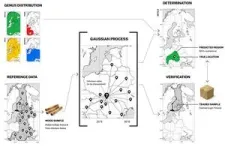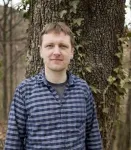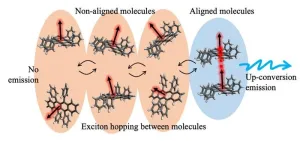(Press-News.org) A new method of timber analysis developed by researchers from the University of Gothenburg can confidently identify the location in which the tree was harvested. The method has been developed with the aim of combating illegal timber imports from Russia and Belarus.
Illegal logging and the associated trade in wood products is a global problem that threatens some of the world's most important ecosystems. Researchers are trying to combat this practise with a new scientific method that can reveal where a tree has been harvested. The researchers present their findings in a paper published in the journal Nature Plants.
“The issue became even more urgent after Russia's full-scale invasion of Ukraine in February 2022. Russian timber continues to be exported to the EU and the US despite imposed sanctions, by falsifying the origin of the timber. Illegal timber exports are partly financing Russia's war,” says Jakub Truszkowski, researcher in computational biology at the University of Gothenburg.
Chemical footprint
A growing tree is affected by its environment. Soil composition, environmental pollution and climate leave a chemical footprint in wood tissue, and this is what the researchers use to determine its origin. First, a large collection of reference material is required. Then, using machine learning, the researchers can determine whether the stated harvest location of the sample is correct.
“We collected 900 wood samples from 11 Eastern European countries, including Belarus and Russia. We selected oak, birch, pine and beech, all of which are important in the timber trade. By analysing and comparing isotope ratios and the concentrations of 15 different trace elements in wood tissue, we can determine the harvest location of the tree within a 200 kilometer radius,” says Jakub Truszkowski.
Useful worldwide
The study led to the creation of a comprehensive reference database on Eastern European timber, tailored to products under sanctions after the invasion of Ukraine. These data facilitated the development of methods to verify the authenticity of timber origin claims and even predict the location of harvest.
“We would like to refine our method so that we can further increase the accuracy and confidence in our predictions. It is still under development and will get better the more data we get,” says Jakub Truszkowski.
While this study focused on the illegal timber trade in Eastern Europe, the method is applicable all over the world. It is estimated that more than half of tropical timber may be harvested illegally.
“It is important to protect highly biodiverse forests from illegal logging. By tracing the origin of timber, we can combat this practice,” says Jakub Truszkowski.
Scientific article in Nature Plants: A framework for tracing timber following the Ukraine invasion
END
Researchers can reveal illegal timber exports
2024-03-14
ELSE PRESS RELEASES FROM THIS DATE:
Study shows potential for using AI tools to detect healthcare-associated infections
2024-03-14
Arlington, Va. — March 14, 2024 — A new proof-of-concept study published today in the American Journal of Infection Control (AJIC) reports that artificial intelligence (AI) technologies can accurately identify cases of healthcare-associated infections (HAI) even in complex clinical scenarios. The study, which highlights the need for clear and consistent language when using AI tools for this purpose, illustrates the potential for incorporating AI technology as a cost-effective component of routine infection surveillance programs.
According to the most recent HAI Hospital ...
ESHRE launches factsheets to highlight environmental threats to fertility and reproductive health
2024-03-14
Governments must act now to address the effects of climate change and air pollution on fertility rates and reproductive health, says a document published by the European Society of Human Reproduction and Embryology (ESHRE) today (Thursday).
The factsheets* provide comprehensive information on global warming, evidence of its impact on fertility, and calls on policymakers to promote swift prevention measures.
Priorities should be to reach net zero CO2 emissions within the next 20 years, and to keep global warming within a 1.5% increase, says the expert ...
Olympic tower construction at Teahupo’o, Tahiti could damage reef ecosystem
2024-03-14
In preparation for the 2024 Olympic surfing competition, a new judging tower is being constructed in the reef lagoon at Teahupo’o, Tahiti. Researchers from the University of Hawai‘i (UH) at Mānoa, UH Hilo, and Arizona State University and community partners in Tahiti recently published a study in Remote Sensing that assessed the potential impacts of the tower and emphasized the importance of protecting the valuable reef—both as an integral part of the ecosystem and a resource for the local community.
“We ...
UNH ingenuity offers unique way to track carbon emissions in bodies of water
2024-03-14
DURHAM, N.H. — Carbon dioxide (CO2) emissions are not typically associated with water ways, like streams and rivers, but emerging research shows that water bodies play an important role in storing and releasing carbon dioxide. As many states look for cost-effective ways to mitigate climate change, scientists at the New Hampshire Agricultural Experiment Station at the University of New Hampshire looked at a way to optimize CO2 sensors to better measure carbon dioxide emissions in lotic, or moving, bodies of water offering a new tool that can help provide valuable information for everything from land use to climate action plans.
“These sensors, adapted for highly ...
Blast-related concussions linked to higher Alzheimer’s risk
2024-03-14
U.S. veterans of the wars in Afghanistan and Iraq who suffered mild traumatic brain injury from exposure to explosive blasts were found to have changes in cerebrospinal fluid proteins that are typically seen in people who develop Alzheimer’s disease, according to researchers at the University of Washington School of Medicine and VA Puget Sound Health Care System.
“While our research does not prove that veterans who experienced these injuries will develop Alzheimer’s disease, it raises the possibility that ...
Modest rise in UK cancer cases but substantial decline in deaths over last 25 years
2024-03-14
Cases of cancer among UK men and women aged 35-69 years have seen a modest rise over the last quarter of a century, but there has also been a substantial decline in death rates, finds a study published by The BMJ today.
The results show a fall in death rates for all cancers combined and for 17 out of 22 cancer types examined, which the researchers say is likely due to fewer people smoking, screening programmes, and improved treatment, while a rise in some less common cancers may be due to higher levels of overweight and obesity, ...
Cancer deaths plummet in middle-aged people
2024-03-14
A first of its kind study by Cancer Research UK reveals premature cancer death rates in 35–69-year-olds fell by more than a third over 25 years
Improvements in the UK are a result of smokefree policies, prevention measures, early detection programmes like cancer screening, and more effective treatment options
But the study paints a mixed picture with cancer cases on the rise and cancer mortality rates still too high
The charity’s manifesto, ‘Longer, ...
How to upcycle low-energy light
2024-03-14
To combine two low-energy photons into one high-energy photon efficiently, the energy must be able to hop freely, but not too quickly, between randomly oriented molecules of a solid. This Kobe University discovery provides a much-needed design guideline for developing materials for more efficient PV cells, displays, or even anti-cancer therapies.
Light of different colors has different energies and is therefore useful for very different things. For the development of more efficient PV cells, OLED displays, or anti-cancer therapies it is desirable to be able to upcycle two low-energy photons into a high-energy photon, ...
Lives could be saved from tropical disease with new rapid test
2024-03-14
Globally, more than half of patients die after infection with the neglected tropical disease, melioidosis, often before they are diagnosed1. A new rapid test could save lives by diagnosing patients in hours, rather than several days taken by current bacterial culture methods, meaning they receive the correct antibiotics faster.
The test uses CRISPR to detect a genetic target that is specific to Burkholderia pseudomallei, the bacterium that causes melioidosis, with 93 per cent sensitivity. It was ...
Revolutionary chronic wound treatment could help millions
2024-03-14
Revolutionary chronic wound treatment could help millions
A team of international scientists has developed an effective treatment for preventing infection in chronic wounds that does not involve antibiotics
The treatment involves the plasma (electrical gas) activation of hydrogel dressings to produce a unique mix of different chemical oxidants that applied to the wound are effective in decontaminating and aiding healing in chronic wounds
The new method is a significant advance that could revolutionise the treatment of diabetic foot ulcers and internal wounds
More than 540 million people ...





